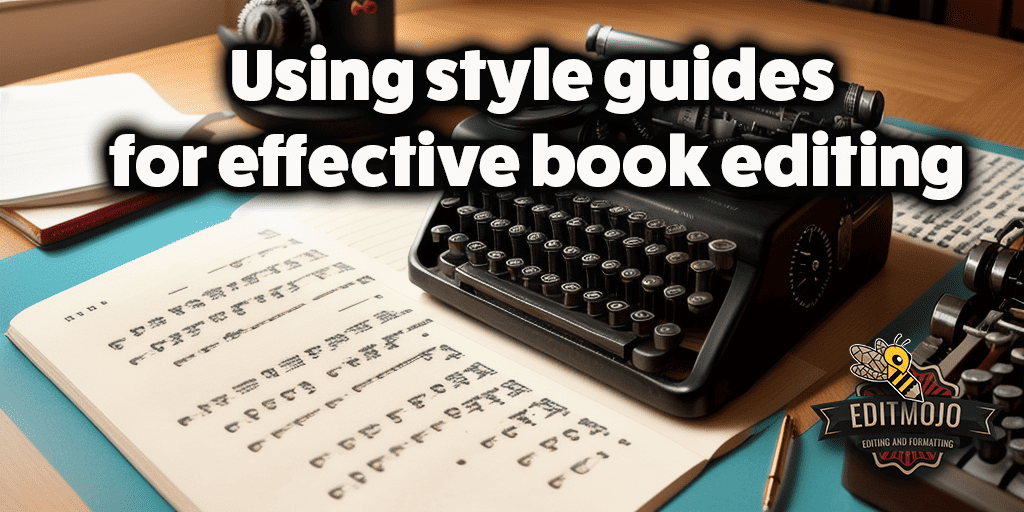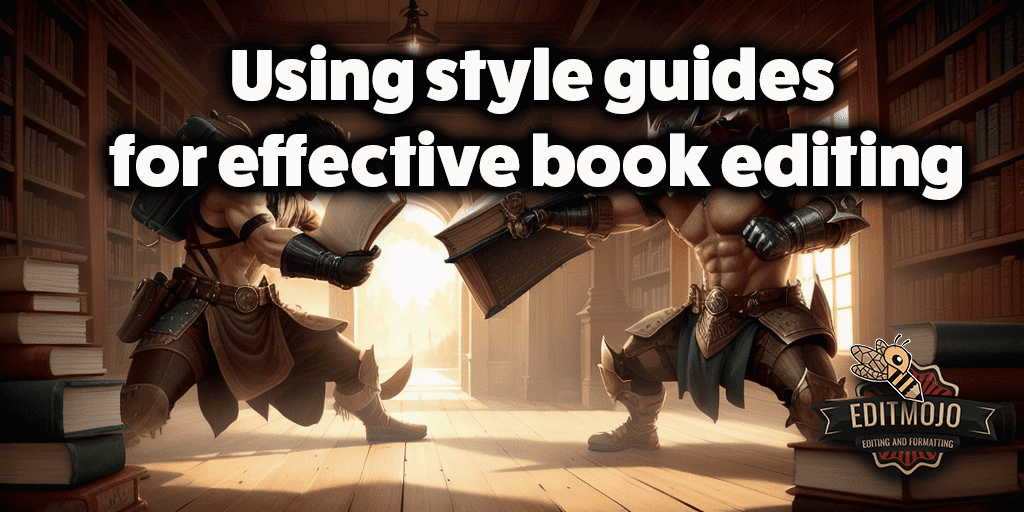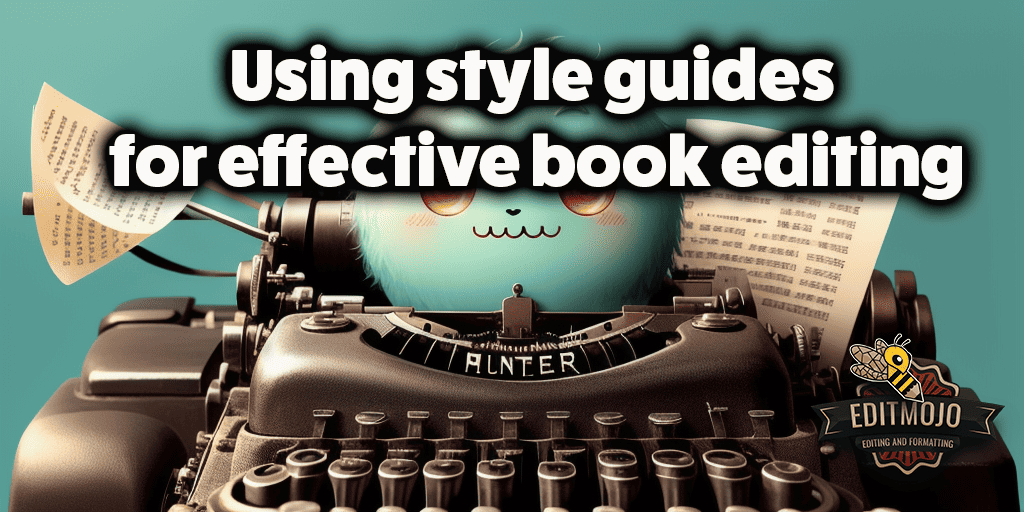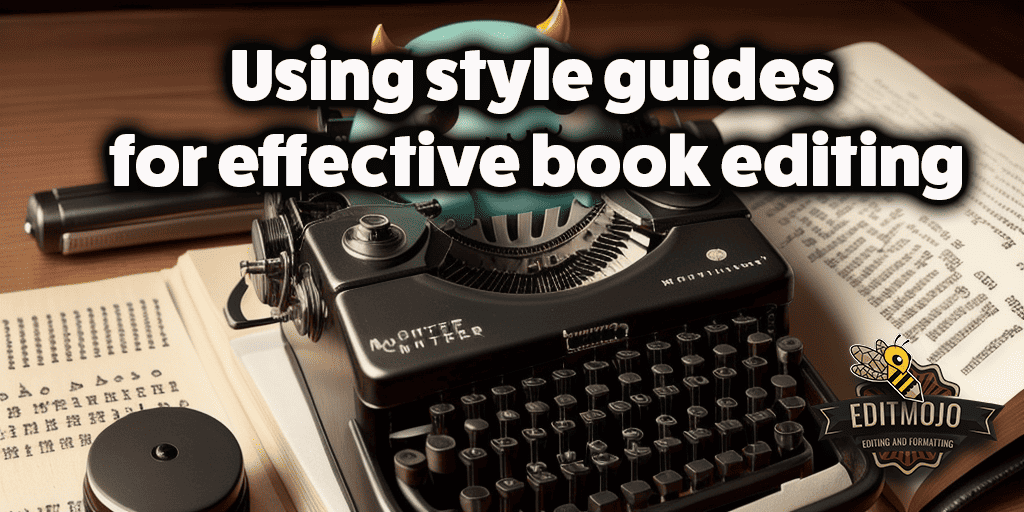Using style guides for effective book editing
Using Style Guides for Effective Book Editing. In the world of book editing, style guides are akin to the compass guiding a ship through the vast sea of words and sentences. They provide a sense of direction, ensuring consistency and professionalism in every piece of writing. This blog post will delve into the fascinating world of style guides and their pivotal role in book editing.
| Section | Key Takeaways |
|---|---|
| Understanding Style Guides | Style guides are rulebooks of writing, dictating everything from grammar to citation styles. Commonly used ones include The Chicago Manual of Style and The Associated Press Stylebook. |
| Creating an Effective Style Guide | A style guide involves defining the editing process, setting writing rules, identifying types of content, and outlining the style and strategy. A style sheet is a crucial component, listing style rules and unique elements of the manuscript. |
| The Role of Editors in Implementing Style Guides | Editors use style guides to shape the manuscript, ensuring it adheres to the defined rules and standards. Different editors may use different style guides. |
| Style Guides in Different Disciplines | Style guides can differ across disciplines. There are specialized style guides for international and STEM sections. |
| Case Study: Implementing an In-House Journal Style Guide | Implementing an in-house style guide can improve consistency and streamline the editing process. Challenges can be overcome with clear communication and regular training sessions. |
| The Evolution of Style Guides | Style guides evolve over time, adapting to changes in language and societal norms, ensuring their continued relevance. |
| Digital Tools for Implementing Style Guides | Digital tools like Grammarly and ProWritingAid can help implement style guides more efficiently, providing style guide enforcement and customization. |
| The Future of Style Guides | With the rise of artificial intelligence and machine learning, style guides may become more intuitive and personalized in the future. |
Understanding Style Guides
Style guides, in essence, are the rulebooks of writing. They dictate everything from grammar and punctuation to formatting and citation styles. There are several types of style guides, each with its unique set of rules. Some of the most commonly used ones include The Chicago Manual of Style and The Associated Press Stylebook. These guides serve as the backbone of consistency in writing, ensuring that every comma and every capital letter is in its rightful place.
Creating an Effective Style Guide
Creating a style guide is like crafting a unique language for your manuscript. It involves defining the editing process, setting writing rules, identifying types of content, and outlining the style and strategy. A well-crafted style guide is a beacon of consistency, guiding all creators involved in the project.
One crucial component of a style guide is the style sheet. This is a document that lists style rules, along with names of places and people in the manuscript. It’s like the DNA of your book, containing all the unique elements that make it distinct.

The Role of Editors in Implementing Style Guides
Editors are the unsung heroes who wield style guides like a master swordsman. They use these guides to shape the manuscript, ensuring it adheres to the defined rules and standards. Different editors may use different style guides, adding another layer of complexity to the editing process. This is why it’s essential to discuss style guides when hiring an editor for your book.
Style Guides in Different Disciplines
Just like languages vary across different regions, style guides can differ across disciplines. For instance, the style guide for a scientific journal may differ significantly from that of a literary magazine. There are also specialized style guides for international and STEM sections, catering to the unique requirements of these fields.

Case Study: Implementing an In-House Journal Style Guide
Implementing an in-house style guide can be a game-changer, as it was for one particular journal. The journal’s team spent considerable time planning and constructing a style guide tailored to their needs. The result was a significant improvement in consistency and a smoother editing process. However, it wasn’t all smooth sailing. They faced challenges, such as resistance to change and training the team, but they overcame these with clear communication and regular training sessions.
In the grand scheme of book editing, style guides are the unsung heroes. They ensure consistency, enhance professionalism, and guide creators in crafting a masterpiece. Whether you’re an author or an editor, understanding and effectively using style guides can make a world of difference in your work.
The Evolution of Style Guides
Style guides are not static; they evolve over time, adapting to changes in language and societal norms. For instance, the APA Style Guide recently updated its guidelines to include singular “they” as a gender-neutral pronoun. This evolution ensures that style guides remain relevant and continue to serve as effective tools for writers and editors.
Digital Tools for Implementing Style Guides
In today’s digital age, there are several tools that can help implement style guides more efficiently. Tools like Grammarly and ProWritingAid not only check for grammar and spelling errors but also provide style guide enforcement. These tools can be customized to follow specific style guides, making the editing process smoother and more efficient.

The Future of Style Guides
As we look towards the future, one thing is certain: style guides will continue to play a pivotal role in writing and editing. With the rise of artificial intelligence and machine learning, we might see style guides becoming more intuitive and personalized. Imagine a style guide that adapts to your unique writing style, providing personalized suggestions and feedback. The possibilities are endless, and the future looks exciting!
In conclusion, style guides are more than just rulebooks; they are the compass that guides us through the vast sea of words and sentences. They ensure consistency, enhance professionalism, and help us craft masterpieces. So, embrace style guides, and let them guide you on your writing journey.
- Q: What is a style guide in book editing?
A: A style guide in book editing is a set of standards for writing and formatting. It includes rules for grammar, punctuation, spelling, citation, and other aspects of writing. It ensures consistency and professionalism in the manuscript. - Q: Why are style guides important in book editing?
A: Style guides are crucial in book editing because they ensure consistency in the manuscript. They provide a standard for grammar, punctuation, spelling, and other aspects of writing, which helps maintain a uniform tone and style throughout the book. - Q: How do editors use style guides?
A: Editors use style guides as a reference while editing a manuscript. They ensure that the text adheres to the rules and standards outlined in the guide, which can include everything from grammar and punctuation rules to specific formatting guidelines. - Q: What are some examples of style guides used in book editing?
A: Some of the most commonly used style guides in book editing include The Chicago Manual of Style, The Associated Press Stylebook, and the MLA Handbook. Each guide has its own set of rules and standards, and the choice of guide often depends on the nature of the book and the preferences of the author or publisher. - Q: Can I create my own style guide for my book?
A: Yes, you can create your own style guide for your book. This can be particularly useful if your book has unique stylistic elements or if you’re writing a series and want to maintain consistency across multiple books. Your custom style guide can include specific rules for character names, terminology, formatting, and more.
